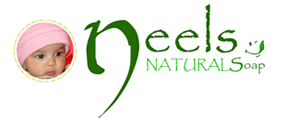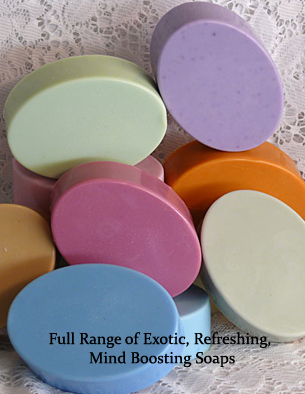
If You Were An Ancient Greek Or Roman, You Cleaned Yourself By Rubbing Olive Oil And Sand Or Pumice On Yourself And Then Scraping It Off. Eventually, Various Cultures Learned To Make And Use Soap, But Bathing Was Often Done For Social Or Ritual Reasons, Not To Become Clean. The Majority Of Cultures, However, Bathed In Water And Most Of Them Heated The Water.
Water Bathing Was Practiced By The Ancient Babylonians, Egyptians, And Romans. The First Of The Famous Roman Baths Was Built About 312 BC. These Wonderful Public Bathing Facilities (Large Communal “Hot Tubs”) Were Supplied With Water From The Aqueduct System. There Were Both Hot And Cold Rooms, And Medium-Temperature Rooms For Lounging, Which Had A Variety Of Services Such As Food And Wine, Massage And “Personal Training.”
We Cannot Say For Sure Who First Made Soap. A Soapy Material Has Been Found In Babylonian Clay Cylinders Dating From As Early As 2800 BC. (Did You Know Babylon Is Now Iraq?) An Egyptian Papyrus From About 1500 BC Describes A Soap-Making Process.
A Commonly Accepted Story For How Soap Was Discovered Comes From A Roman Legend According To Which Rain Would Wash Down Through The Ashes And Animal Fat Of The Burnt Animal Sacrifice Area Of Mount Sapo Into The Clay Banks Of The Tiber River Where The Local Women Washed Their Clothing, And They Noticed That This Clay Mixture Made Their Wash Cleaner. It Is Most Likely, However, That The Process Of Making Soap Was Discovered Independently In Many Places Around The World, As News Did Not Travel Quickly In The Early Eras Of Mankind.
At Any Rate, We Know That Public Baths Had Become Very Popular As A Social Gathering Place In Europe By The Middle Ages. Criers Ran Through The Streets To Announce That The Water Was Hot. Food And Drink Were Served On Floating Wooden Tables And Entertainment Was Provided. A Good Time Was Had By Many. Too Good A Time By Too Many, In The Eyes Of The Church, Which Saw It As Overindulgence In Pleasures Of The Flesh.
Although Bathing Remained A Healthy Custom In Places Like Japan And Iceland, It Fell Out Of Favor In Europe Due To Deadly Misperceptions And Religious Beliefs, And Thus Filth Was A Strong Contributor To The Horrible European Plagues Such As The Black Death Of The 14th Century. Cities Were Built Without Water-Delivery Or Waste-Removal Systems, And Garbage, Human Waste And Rats Were Ubiquitous. Change Was Not Facilitated By The Fact That The Church Was Adamantly Against Bathing, Declaring Not Only That It Was Sinful But That It Opened The Body To The Plague And Other Diseases. Filthiness Was Considered A Sign Of Holiness.
Members Of Some Holy Orders Bragged That They Washed Only The Tips Of Their Fingers. Even Doctors Believed That A Layer Of Filth On Ones Body Protected One From Disease. It Was Also Believed That Odors Caused Disease And That Smelling To High Heaven Yourself Would Protect You, If You Could “Outstink” The Odors Around You. Not Until The 17th Century Did Bathing Become Common Again In Europe. The Discovery Of Germs In The Mid 1800s Certainly Encouraged People To Get And Stay Clean.
Italy, Spain And France Were Early European Soap-Manufacturing Centers. By The End Of The 12th Century, English Soap Guilds Were Also Making Soap From Olive Oil, Animal Fats And Plant Ashes, Using Secret Recipes. Sixteenth And 17th Century Housewifely Texts Contained Recipes For Mixing Cut-Up Guild-Made Soap With Scenting Agents To Form A Pleasant-Smelling Soap For Personal Use. Cleanliness Standards Improved Significantly When The High Taxes That Several Countries Had Placed On Soap As A Luxury Item Were Removed In The 19th Century.
Although Some Commercial Soap Making In The American Colonies Began With The Arrival Of Several Soap Makers On The Second Ship From England In 1608, For Many Years Soap Making Was Essentially A Household Chore, With Colonial Americans Making Their Own Soap From Animal Fats And Wood Ashes.
The Colonists Boiled Animal Fats To Render Them Into Oil. Lye Solution Was Prepared By Pouring Water Through Ashes, And Considered To Be The Right Strength When A Potato Or Egg Would Float In It With An Area About The Size Of A Quarter Above The Surface. What Experience Had Proven To Be About The Right Amount Of Lye Was Added To Some Of The Oil And The Mixture Was Boiled Until It Became Frothy And Had A Bite To It If Tasted. Upon Cooling, The Resulting Jelly-Like Soap Was Stored In A Wooden Barrel And Dipped Out As Needed. Hard Soap Could Be Made By Adding Salt, But Salt Was Too Precious To Use Just For Making Soap. Most Of The Colonists’ Soap Was Used To Wash Clothing, Rather Than To Wash Colonists.
Since Then, “We Have Come A Long Way, Baby.” Today, Very Few Of Us Stink, And We Have “Soaps” In A Previously Unimaginable Variety Of Shapes, Colors And Scents, Both Solid And Liquid. But Just What Are They Made Of, And Is This A Matter Of Concern? It Should Be.
Water Bathing Was Practiced By The Ancient Babylonians, Egyptians, And Romans. The First Of The Famous Roman Baths Was Built About 312 BC. These Wonderful Public Bathing Facilities (Large Communal “Hot Tubs”) Were Supplied With Water From The Aqueduct System. There Were Both Hot And Cold Rooms, And Medium-Temperature Rooms For Lounging, Which Had A Variety Of Services Such As Food And Wine, Massage And “Personal Training.”
We Cannot Say For Sure Who First Made Soap. A Soapy Material Has Been Found In Babylonian Clay Cylinders Dating From As Early As 2800 BC. (Did You Know Babylon Is Now Iraq?) An Egyptian Papyrus From About 1500 BC Describes A Soap-Making Process.
A Commonly Accepted Story For How Soap Was Discovered Comes From A Roman Legend According To Which Rain Would Wash Down Through The Ashes And Animal Fat Of The Burnt Animal Sacrifice Area Of Mount Sapo Into The Clay Banks Of The Tiber River Where The Local Women Washed Their Clothing, And They Noticed That This Clay Mixture Made Their Wash Cleaner. It Is Most Likely, However, That The Process Of Making Soap Was Discovered Independently In Many Places Around The World, As News Did Not Travel Quickly In The Early Eras Of Mankind.
At Any Rate, We Know That Public Baths Had Become Very Popular As A Social Gathering Place In Europe By The Middle Ages. Criers Ran Through The Streets To Announce That The Water Was Hot. Food And Drink Were Served On Floating Wooden Tables And Entertainment Was Provided. A Good Time Was Had By Many. Too Good A Time By Too Many, In The Eyes Of The Church, Which Saw It As Overindulgence In Pleasures Of The Flesh.
Although Bathing Remained A Healthy Custom In Places Like Japan And Iceland, It Fell Out Of Favor In Europe Due To Deadly Misperceptions And Religious Beliefs, And Thus Filth Was A Strong Contributor To The Horrible European Plagues Such As The Black Death Of The 14th Century. Cities Were Built Without Water-Delivery Or Waste-Removal Systems, And Garbage, Human Waste And Rats Were Ubiquitous. Change Was Not Facilitated By The Fact That The Church Was Adamantly Against Bathing, Declaring Not Only That It Was Sinful But That It Opened The Body To The Plague And Other Diseases. Filthiness Was Considered A Sign Of Holiness.
Members Of Some Holy Orders Bragged That They Washed Only The Tips Of Their Fingers. Even Doctors Believed That A Layer Of Filth On Ones Body Protected One From Disease. It Was Also Believed That Odors Caused Disease And That Smelling To High Heaven Yourself Would Protect You, If You Could “Outstink” The Odors Around You. Not Until The 17th Century Did Bathing Become Common Again In Europe. The Discovery Of Germs In The Mid 1800s Certainly Encouraged People To Get And Stay Clean.
Italy, Spain And France Were Early European Soap-Manufacturing Centers. By The End Of The 12th Century, English Soap Guilds Were Also Making Soap From Olive Oil, Animal Fats And Plant Ashes, Using Secret Recipes. Sixteenth And 17th Century Housewifely Texts Contained Recipes For Mixing Cut-Up Guild-Made Soap With Scenting Agents To Form A Pleasant-Smelling Soap For Personal Use. Cleanliness Standards Improved Significantly When The High Taxes That Several Countries Had Placed On Soap As A Luxury Item Were Removed In The 19th Century.
Although Some Commercial Soap Making In The American Colonies Began With The Arrival Of Several Soap Makers On The Second Ship From England In 1608, For Many Years Soap Making Was Essentially A Household Chore, With Colonial Americans Making Their Own Soap From Animal Fats And Wood Ashes.
The Colonists Boiled Animal Fats To Render Them Into Oil. Lye Solution Was Prepared By Pouring Water Through Ashes, And Considered To Be The Right Strength When A Potato Or Egg Would Float In It With An Area About The Size Of A Quarter Above The Surface. What Experience Had Proven To Be About The Right Amount Of Lye Was Added To Some Of The Oil And The Mixture Was Boiled Until It Became Frothy And Had A Bite To It If Tasted. Upon Cooling, The Resulting Jelly-Like Soap Was Stored In A Wooden Barrel And Dipped Out As Needed. Hard Soap Could Be Made By Adding Salt, But Salt Was Too Precious To Use Just For Making Soap. Most Of The Colonists’ Soap Was Used To Wash Clothing, Rather Than To Wash Colonists.
Since Then, “We Have Come A Long Way, Baby.” Today, Very Few Of Us Stink, And We Have “Soaps” In A Previously Unimaginable Variety Of Shapes, Colors And Scents, Both Solid And Liquid. But Just What Are They Made Of, And Is This A Matter Of Concern? It Should Be.

